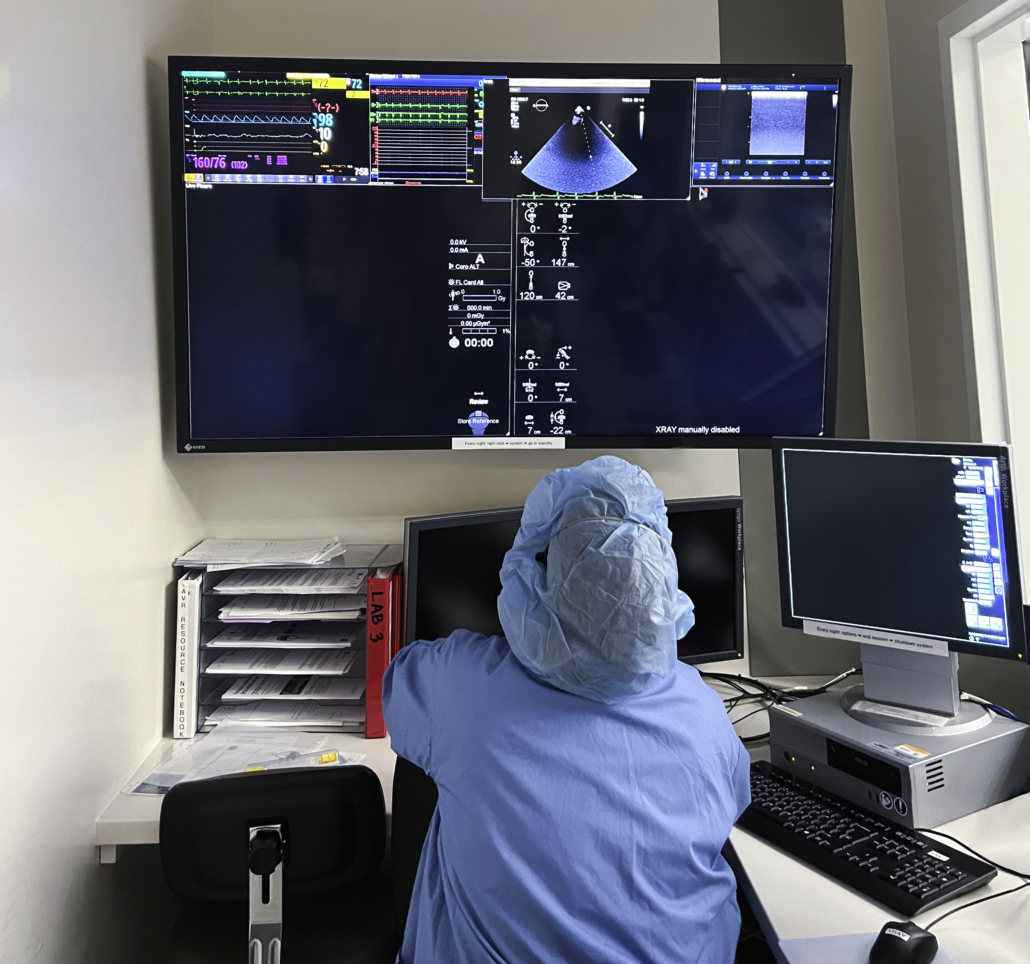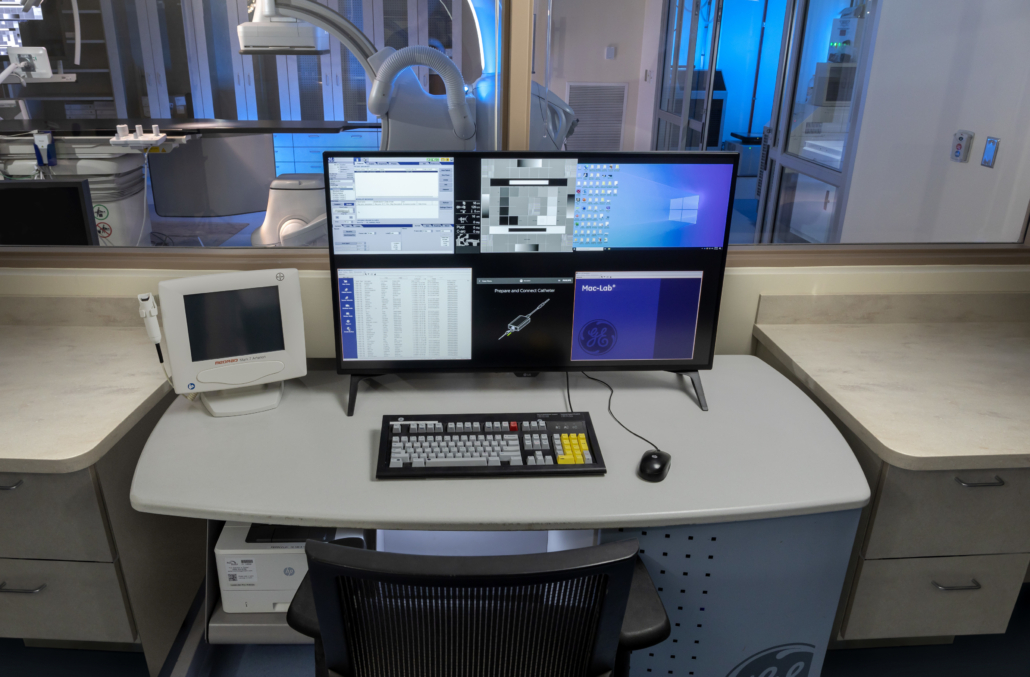Digitalisation in the operating theatre
Full attention on the patient: Multi Display Manager transmits, combines and manages up to 27 image sources in real time with minimal latency on 4K UHD
Dynamic layout control via tablet, on-screen and remote control via API
The Multi Display Manager (MDM) is a fully integrated solution that supports the smooth running of complex and intricate surgeries. This is also very necessary, because as medical technology constantly develops, more and more image and video signals are finding their way into the operating theatre. Physicians and surgical teams have to assimilate a lot of visual information, often on many screens at different locations in the operating theatre. Attention, which ideally should always be on the patient, is deflected to monitoring and managing the technology. Tritec Electronic GmbH put an end to this for the first time in 2008 with its MDM. 2023 will now see MDM’s 5th generation available on the market: the system captures and transmits up to 27 image sources almost latency-free on up to six 8 MP displays (4K) or other screen combinations and additional IP streams. Each source can be dynamically scaled, moved and managed in the process. It can be controlled either directly from the operating theatre via touch panel/tablet or keyboard and mouse, or via the IP network interface from a control system.
“Medical staff need to monitor numerous digital information sources in parallel during a surgery and evaluate them in real time,” says Markus Müller-Heidelberg, Managing Director of Tritec Electronic GmbH. These sources are transmitted by medical imaging systems that fulfil a wide range of functions, from monitoring vital signs and interventional imaging to robots that assist in surgical tasks Until now, it has been common practice for the operating theatre to be equipped with a separate screen for each of these devices. However, not only can it become easy to lose sight of the overview when monitoring and managing all of them rapidly; it can also tie up a significant proportion of the resources during a surgery. “Our Multi Display Manager (MDM) integrates all these sources – up to 27 in total – into a single central administration point,” Müller-Heidelberg explains. “The signals that are output by the MDM can then be clearly used and managed on up to six independent displays.”
4K inputs on up to six independent 4K displays
The manufacturer has developed a new input card for the current product version that feeds several image signals of different formats such as DisplayPort, HDMI and SDI directly into the unit via fibre-optic Ethernet. This means the application is no longer restricted by the limitations of copper cables. The signals can be output on up to six connections with a maximum of 8 MP (4K) at 60 Hz. Several screens of the same resolution can be combined as extended monitors to form large displays.
“The biggest problem in development is the bandwidth limit of the PCIe,” Müller-Heidelberg says. “This is because we route the image data natively via the local bus system to achieve real-time processing with minimal latencies of just one to three frames, which is so critical in medical technology for hand-eye coordination.” Because delays in data transmission can have fatal consequences in the operating theatre. To ensure that the MDM functions seamlessly in such critical application environments under 24/7 continuous operation, not only is the hardware robustly constructed, but it is also equipped with redundant power supply and Active Watch Dog. Due to the variable form factor from 19” to 2 or 4U, the system can be easily installed even in small spaces, as is often necessary in older operating theatres. The manufacturer puts significant attention into responding agilely to requests in terms of dimensions and function from the environment of OEM providers of total OP solutions and integrators, and to implementing them in an application-specific manner.
Individually definable personalised layouts and live streams
The MDM standard mode provides predefined layouts which display the individual image sources with minimal effort. This means that the system is ready for use quickly and easily, even with changing operating theatre set-ups. In contrast, the flexible KVM mode means four independent users can operate up to 14 sources. This is particularly useful for more intricate and lengthy surgeries with larger teams. The MDM also enables a clearer setup in the control room by consolidating the displays from various systems. “Different layouts including extended or mirrored displays can be defined for each output, and the data sources can also be cropped or overlap each other – or be protected against this,” explains Müller-Heidelberg. “You are not restricted to choosing between the classic four- or six-image split.” This flexibility streamlines the workflow and helps surgical teams focus. Control is possible via different interfaces depending on the degree of system integration and individual process preferences. The manufacturer provides a web application and a REST API for remote administration.
The MDM is IP-capable as standard, so that local outputs and inputs as well as streams can be integrated – both as inputs and outputs. This opens up new possibilities for research and teaching in particular, as operating theatres can be streamed live into the lecture theatre. Alternatively, the technology means other specialists can be consulted, so that the operating surgeon can, for example, get an assessment from a colleague who is not on site but who is following the corresponding sources live. “Our MDM offers surgical teams the tool they need to keep track of the available image and video sources even in complex and lengthy surgeries, allowing them to devote their full attention to patient care,” says Müller-Heidelberg in summary.
Further information is at www.multi-display-manager.com and www.tritec.de



